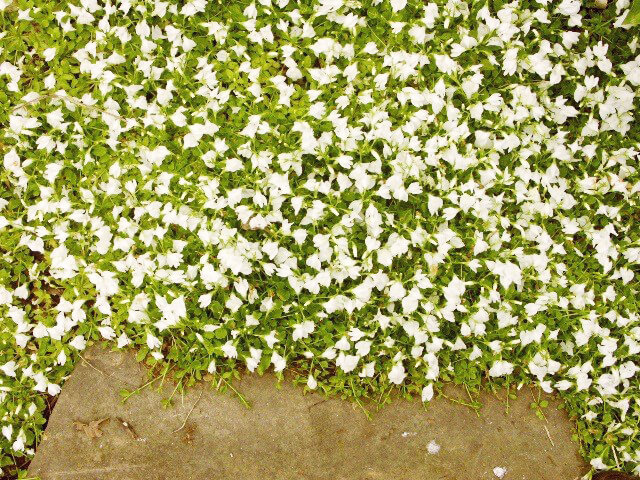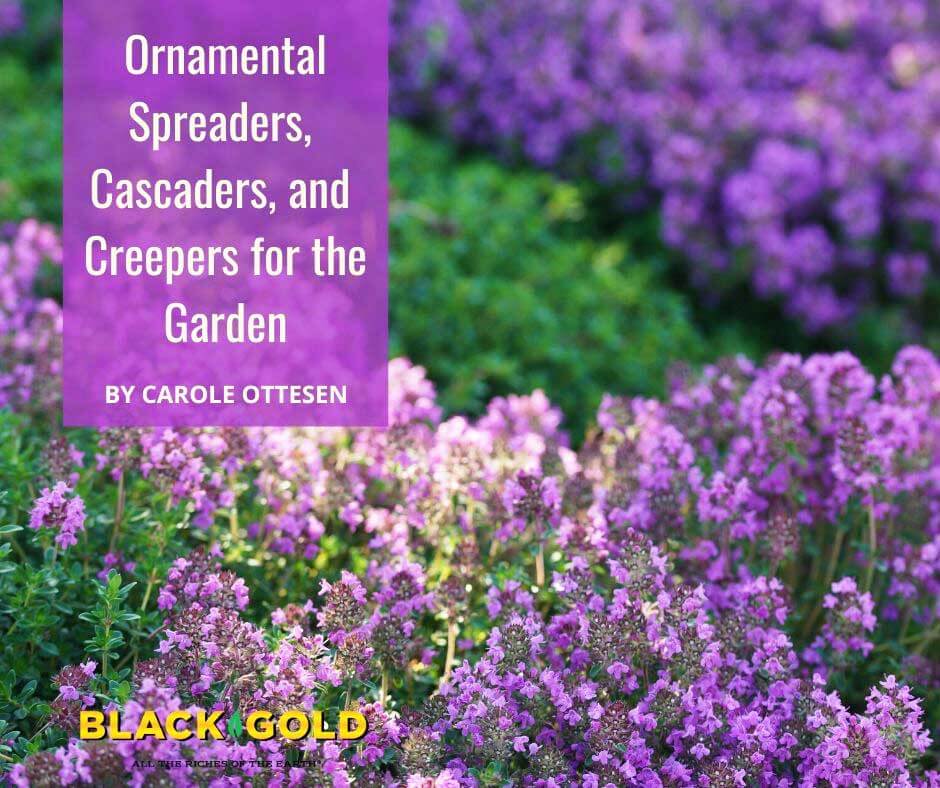
Tired of weeding the cracks in sidewalks and the places around stepping stones? Plant creepers. These ground-hugging perennials are small but mighty, working proactively to keep untidy grass and weeds from taking over. Creepers fill in along edges and around stepping stones, and some are tiny enough to thrive in the narrow cracks of sidewalks. And, if you plant them along the edges of containers or walls, they transition to elegant cascaders in a snap.
Creeping Speedwells
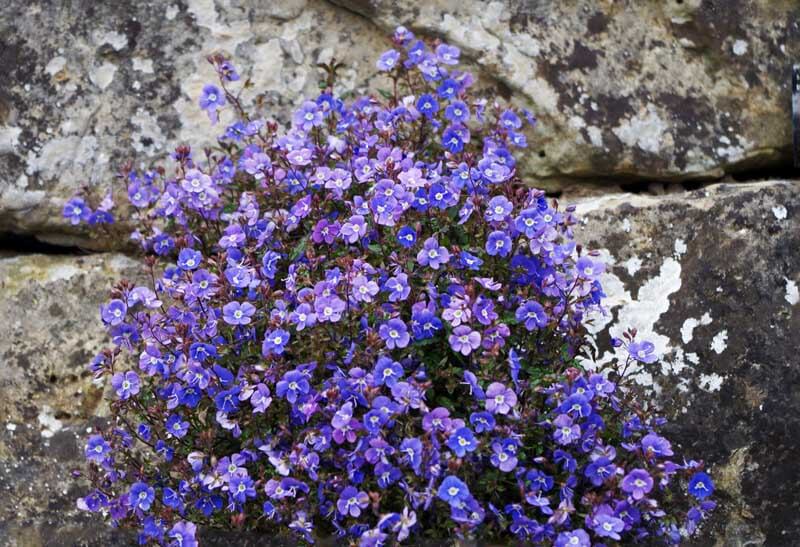
Lesser known than their tall-flowered relatives, the creeping veronicas–also known as speedwells—form 1 to 5 inch tall, dense mats that tolerate light foot traffic. The perennial veronicas on this list are evergreen, deer-resistant, and tolerant of both drought and heat. Some are extremely hardy, and all are spring flowering.
Georgia Blue Creeping Speedwell (Veronica peduncularis ‘Georgia Blue’, USDA Hardiness Zones 6-9) will creep steadily outward to form a 2- to 4-foot carpet. Very early spring flowers bloom a vibrant violet-blue with sparkling white centers. Easy to grow, tolerant of light shade, and quick-spreading but not invasive, Georgia Blue’s foliage turns purple-bronze in winter.
The bright green foliage of Tidal Pool Creeping Speedwell (Veronica x intermedia ‘Tidal Pool’, Zones 4-8) is more compact than that of Georgia Blue. A carpet of bright blue flowers with white eyes covers this ground hugger in mid-spring. Tidal Pool will spread steadily outward to 3 feet. It handles light foot traffic, humid conditions, and stays evergreen.
Sunshine Creeping Speedwell (Veronica repens ‘Sunshine’, Zones 6-9) is called golden creeping speedwell for the low, bright yellow foliage that spreads slowly outward to form 1-foot-wide patches. Under an inch tall, Sunshine covers itself with small white flowers in late spring to early summer.
Creeping Jenny
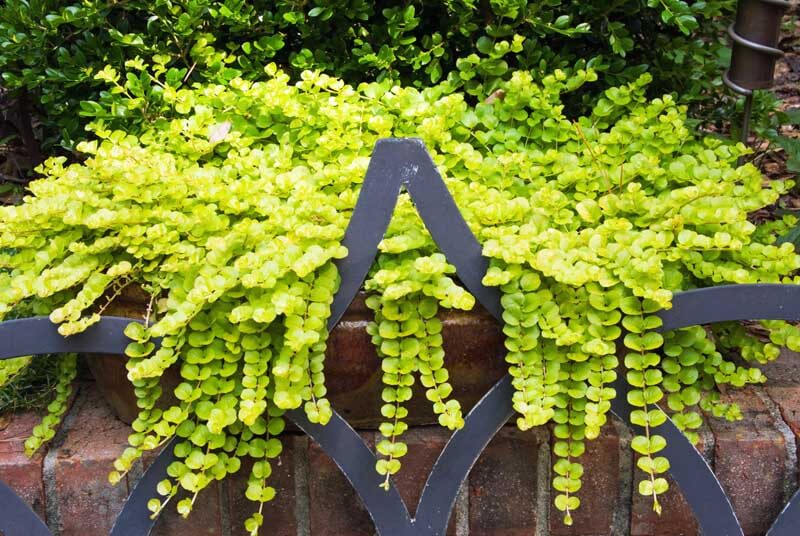
Another yellow ground hugger, Golden Creeping Jenny (Lysimachia nummularia ‘Aurea’, Zones 3-8) grows 2 inches tall, spreading ever outwards, rooting as it goes to form patches that glow like sunshine on the ground. It tolerates some foot traffic and thrives in evenly moist soil in partial-sun to partial-shade. Yellow flowers bloom in June. Plant this only where you want ample coverage because it can easily spread out of bounds if given a chance. There is also a green-leaf form, which is equally vigorous.
If you like creeping Jenny but dislike its aggressive growth, try the Proven Winners variety Goldilocks Creeping Jenny (Lysimachia nummularia ‘Goldilocks’, Zones 3-10), which spreads to just 14 inches with all the same good looks and vigor.
Dichondra
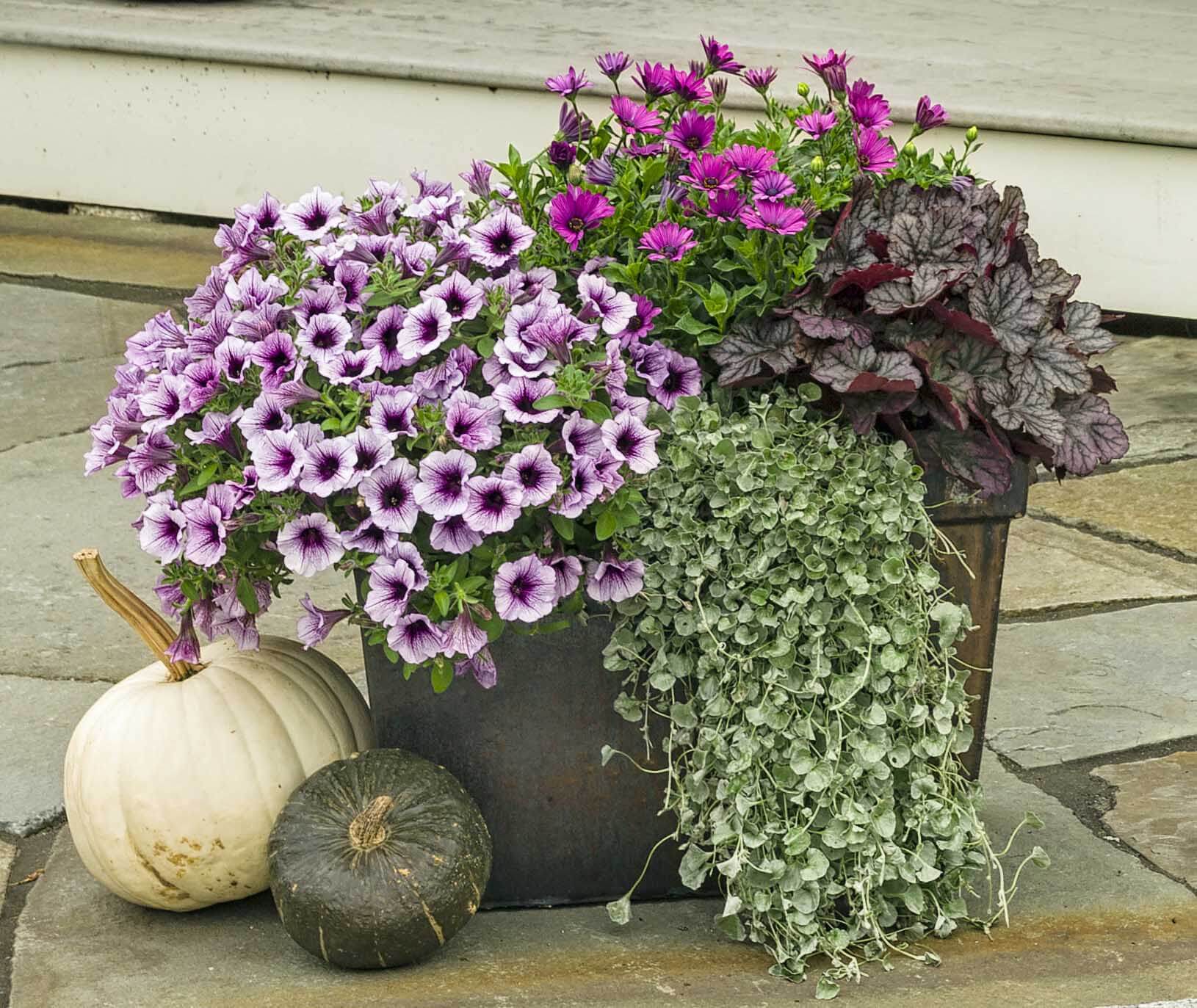
Where it is hardy in the subtropics and tropics, the tough silver nickel vine (Dichondra repens, Zones 10-12) can serve as a lawn. Where it is tender, grow it as a fast-growing bedding or container annual or even a house plant. The tiny, circular, bright green leaves creep along the ground, swiftly filling in the tiniest of cracks. The finest garden variety is the pure silver Proven Accents® Silver Falls, which looks spectacular creeping along a sunny bed edge or dramatically spilling from a pot. Although dichondra is persistent, weeding out the taller competition in its path will speed coverage.
Creeping Mazus
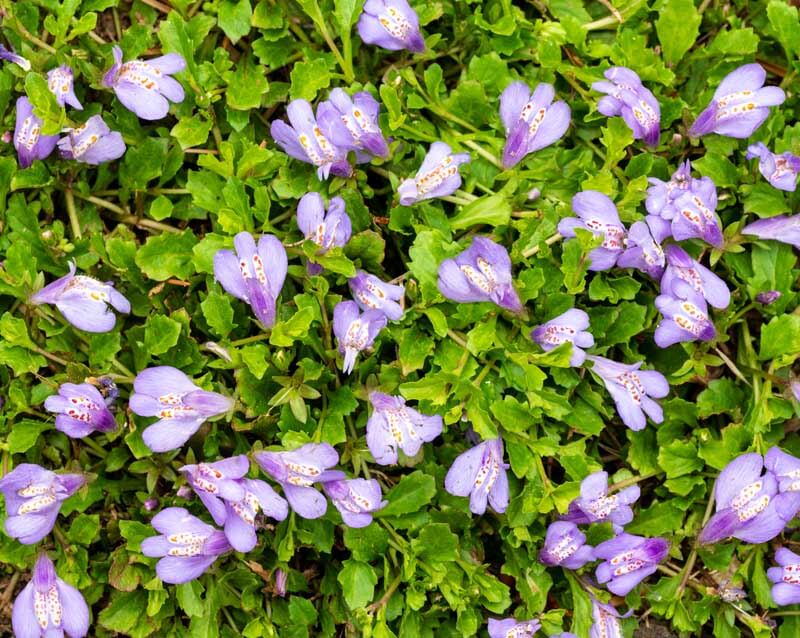
The tiny creeping mazus (Mazus reptans, Zones 5-8) is an utterly carefree 4-inch-tall spreader that multiplies quickly in moist, well-drained soil in the sun or shade. Durable and tolerant of tough conditions, including foot traffic, it spreads into a dense mat of bright green that can be contained easily if necessary.
In late spring, mazus is studded with purple blooms that are reminiscent of monkeyflowers. There is also a white-flowered form called ‘Alba’.
Blue Star Creeper
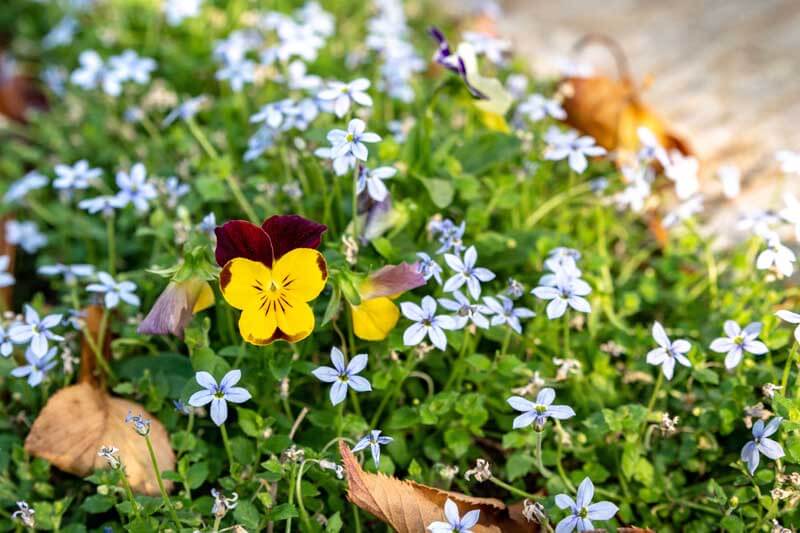
At a half inch-tall, blue star creeper (Isotoma fluviatilis, Zones 5-9) is a creeper of many talents, including its role as a ground cover that tolerates deer, drought, and rabbits and can eliminate the need for mulch at the base of shrubs. Tiny sky blue flowers bloom sporadically throughout the summer.
Thyme
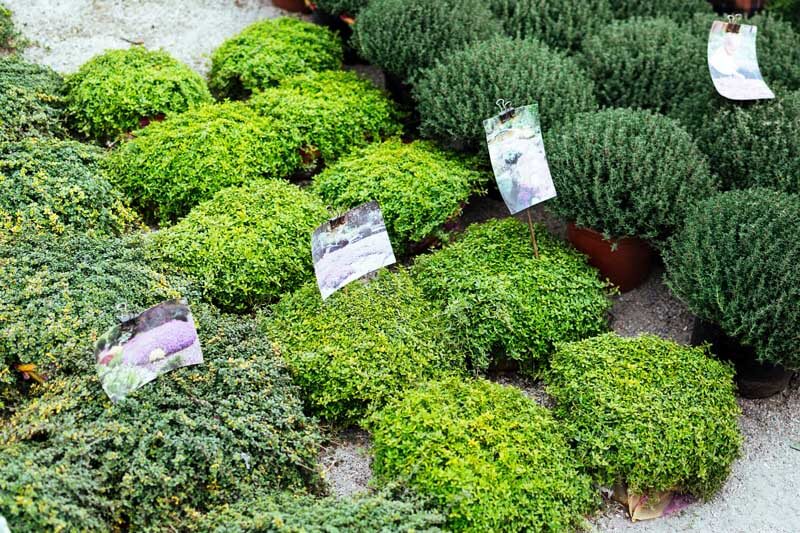
There are many creeping fragrant thymes that have the added bonus of being culinary herbs. The gray-green woolly thyme (Thymus pseudolanuginosis, Zones 5-8) thrives in a bright sunny place where it slowly expands outward but remains just under 3 inches tall. It is charming, cascading over rocks and walls.
Another is Pink Chintz Creeping Thyme (Thymus serpyllum ‘Pink Chintz’, Zones 5-8), which grows to just a few inches high and produces spectacular shows of pink flowers in late spring to early summer. It spreads so well that it can also be used as lightly used lawn out West. (Click here to read an article about establishing thyme lawns.)
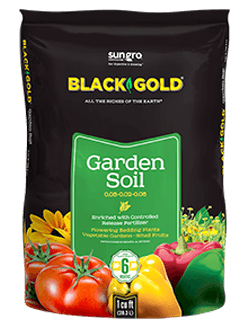 Creepers are best planted as small plants or plugs when nesting among stones or along walkway edges. Mix in a little Black Gold Garden Soil at planting time for better establishment. Not only does it contain needed organic matter, but is contains an all-purpose fertilizer that feeds plants for up to six months. Larger specimens can be planted in containers filled with Black Gold All Purpose Potting Mix. Be sure to give newly planted creepers enough water in their first weeks post-planting for good establishment.
Creepers are best planted as small plants or plugs when nesting among stones or along walkway edges. Mix in a little Black Gold Garden Soil at planting time for better establishment. Not only does it contain needed organic matter, but is contains an all-purpose fertilizer that feeds plants for up to six months. Larger specimens can be planted in containers filled with Black Gold All Purpose Potting Mix. Be sure to give newly planted creepers enough water in their first weeks post-planting for good establishment.
While creepers successfully crowd out weeds, they are more than simply workhorses. Highly ornamental, they provide a neat, unifying effect to the garden’s edges, cracks, and bare spaces, and add cheerful flowers into the bargain.
